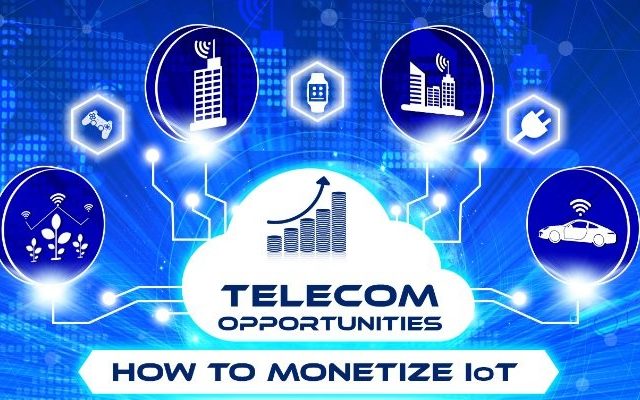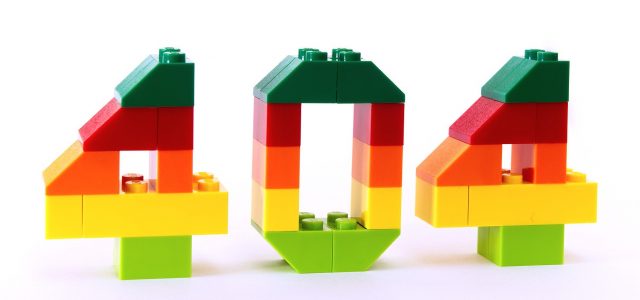The Internet of Things (IoT) is ranked high on the list of revenue generating opportunities for most Telecom Companies. It is expected to become an enormous market with devices from all over the world connected to the IoT network.
There is no doubt that it would become the next big thing. The real questions are about monetization and the business model that would run the system. Where exactly do telecom operators expect to make money from IoT services?
Current Status
According to Jan Karlsson, Vice President & General Manager Digital at Ericsson, Telecom companies make the overwhelming portion of their income through existing networks and services. Around 96% of income is generated through traditional telecom services.
However, these risk becoming obsolete in a few years. IoT, the next big thing, makes a very small portion of the income for Telecom companies today.
It is essential for the business sustainability of Telcos that they find ways to monetize their IoT services. Karlsson believes that operators have both an opportunity and obligation to do more and move towards monetization of their services.
That begs the questions; why are the telecom companies so slow in finding ways to monetize their IoT services?
The Changing Role Of Telcos
One difficulty for Telcos is that it is difficult to identify their role in the Internet of Things. It is quite complex to determine what services they can offer in the shift towards an IoT ecosystem. In the main, Telcos have been unable to identify how their network could add value for IoT users.
As Karlsson says, it is a must that Telcos find a better, smarter way to do more and to enable their customers and partners, not just provide connectivity. He also explains that operators need to be agile, flexible and change course rapidly. There is no silver bullet.
Telcos partnering with Gaming Companies
Take the example of online gaming. Connection speed is a critical component for online games. These games don’t necessarily need to send a huge amount of data over the internet. They rely on sending small packets but at lightening fast speeds so that there is no delay between inputs and screen actions.
However, this doesn’t work with Telco operators. They didn’t build the internet for real-time applications. Major ISPs sometimes prioritize cost over latency. They route traffic through the cheapest possible paths, which aren’t necessarily the fastest.
This works in most cases as internet users prefer low cost more than the difference of a split second in the time it takes to download a video or browse a website. The difference becomes really visible in online gaming where even the slightest lag results in life and death (of your gaming avatar).
When League of Legends, one of the most popular online video games, went through the issue of lagging, their developers created their own internet to let players connect to the game. Riot Games created a network of routers, data centers and peer ISPs to create a network that placed latency before costs. Players from any part of the country would be directly connected to Riot’s access servers rather than routers on the regular ISP network.
With 5G, Telcos can offer new levels of latency but there is more than just network connectivity that they can offer to gaming companies. One example Ericsson showed me during a recent visit to Kista, Sweden was an interface that allowed the gamer to manage their account from inside the game, for example they could top up their data allowance without having to exit the game.
Data Analytics
Telcos can perform real-time analytics on the data stored in subscriber data management systems. This can allow them to improve their operational efficiency. Some examples of data analytics are roaming analytics, IoT cross database consistency and plan-to-provisioning.
Data analytics will allow businesses to create new business opportunities by enhancing their KPI monitoring and improving their target offering based on customer insights. But there is also an opportunity to make analytics available to partners, with the appropriate security and privacy controls.
Karlsson mentions a good example with Telco operator, MTN, who can provide people without bank accounts the ability to build up a credit score based on their use of mobile money.
Apple Watch
The Apple watch is a good example of application and product developers working together with Telcos to create a great product for the customers. The watch heavily relies on a fast 4G connection speed unlike traditional watches.
As Karlsson says, this close co-operation is a really good example of telcos exposing capabilities to partners to provide an exceptional customer experience
Similar products and gadgets that offer enhanced functionality for users based on opening network capabilities to partners would allow telcos to monetize in multiple ways.
Opportunities of IoT Monetization
The team at Ericsson discussed some key opportunities for IoT monetization with us, going over four main areas; smart cities, smart homes, smart cars and IoT based agriculture.
Smart Cities and Transport
An area that can benefit greatly from IoT is public transport. Developers are looking at ways to create a platform that takes a large number of variables into account to control traffic more efficiently.
This platform will take into account people, vehicles, weather, traffic lights, timing and all the data that can have an impact on traffic to create an online system with public access. A real time map will inform commuters of traffic densities in various parts of the city so they can make better decisions about taking one route or another.
Creating this kind of transport network will require immense amounts of data transfer in real time. Most people and vehicles on this platform would be connected through mobile phones or smart gadgets. It is an opportunity for Telcos to work with product developers to integrate their networks and identify how the system would be monetized.
A couple of months ago Ericsson published a demo showing how telcos could create a business opportunity around enabling a self-driving taxi company: http://cloudblog.ericsson.com/digital-services/the-role-of-telecom-billing-systems-in-5g-business-disruption.
Smart Homes and Energy
Perhaps the biggest drive for IoT comes from Smart home and energy consumption technologies. Smart homes make use of internet connectivity to allow home owners control of various appliances and devices in the home from remote locations.
A smart Air Conditioner can be set to turn on from your office as you are leaving so that you arrive home to a pleasant environment during summer. Similarly, you may set the water heater to turn on 20 minutes before getting home if you are planning to take a bath.
Curtains and window blinds can also be connected to the network, adjusting automatically depending on the time of the day to let in the appropriate amount of sunlight.
A smart TV will be able to pick up your favorite programs, make suggestions and record your favorite shows automatically.
Smart Car
Integrating your car’s system into the IoT allows added functionality.
A lot of people would like the option to heat up or cool down their car before they take a seat. Smart cars will allow commuters to start the air conditioning 20 prior to going for drive.
You can also use your car for getting a delivery of groceries from suppliers while working at the office. Delivery service will be able to track the car through GPS and send you a message when they locate it. Drivers will be able to remotely open the trunk to receive the delivery while paying for the groceries online.
IoT Monetization in Agriculture
IoT has a lot of scope in precision farming. The goal of precision farming is to generate data via sensors that track vehicles, monitor livestock, take field observations and monitor storage areas.
Sensors can be mounted on animals that monitor their health. If an animal becomes sick, it can be quickly separated from the herd to prevent spread of disease. Sensors can also monitor crop fields for signs of pest-infestation and weed growth, enabling farmers to only apply pesticides and herbicides in the required locations.
Controllers can help farmers drive tractors remotely while drones can monitor large areas of cultivated land in a very short amount of time.
Telcos that work with product developers in these areas will see a lot of opportunities for monetization.
Challenges to Overcome
The next generation of internet comes with opportunities but isn’t without challenges. Telcos will need to overcome these challenges in order to move into the next era.
Better Capabilities
One area that is easy to identify is network connectivity. 5G is starting to be deployed and it will provide not only a faster network but also the very low delays necessary for many of the IoT use cases. It also opens up the network to new types of IoT devices, ranging from tiny, low-cost monitoring devices which need 10 years of battery life, all the way up to sophisticated AI-driven devices providing critical functions such as healthcare and transport.
Strategic Decisions
But it isn’t only the network which needs to develop. Operators face the need to re-invent themselves with their strategy for this new ‘always on – always connected’ world. How will they move beyond just connecting devices to becoming relevant for IoT vendors and app developers? And how will they build trust and relationships with the major multinational brands and internet companies?
Lack of Exposure
Karlsson believes network operators haven’t really exposed themselves to opportunities present in data analytics and in providing APIs. There is a wealth of data that is available for network operators to help their customers understand and use but they have left the field open.
When asked who should take the lead, he was quite optimistic about the future. He pointed out that it is usually the challengers, the second and third ranking companies in a market, who are willing to try new things. He believes that we will see a lot of innovations and adoption from the companies that rank lower in the industry.
Nonetheless he stressed that the incumbent and leading companies in Telco business are already deploying 5G and IoT and they will be in a strong position once they see the potential benefits and monetization opportunities that are available.
In his view, there are three key capabilities operators will need to be successful in the IoT business: real-time responsiveness, exposing simple and effective APIs, being data-driven.
Watch the full interview with Jan Karlsson over here.
Future of IoT
IoT has a bright future ahead. Agile service operators will find some challenges as they explore this new generation of internet but they also have a lot to gain by becoming trend setters and some of the first telcos that monetize the vast amounts of data available through the networks.
Article by channel:
Everything you need to know about Digital Transformation
The best articles, news and events direct to your inbox
Read more articles tagged: Featured, Internet of Things







